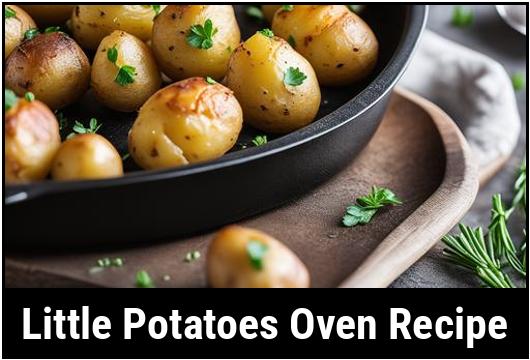
Little Potatoes Oven Recipe: A Comprehensive Guide
Welcome to a comprehensive guide on cooking little potatoes in the oven! In this article, we will delve into the food science behind these delicious tubers, provide culinary details, and walk you through every step from selection to serving. Whether you are a cooking novice or a seasoned chef looking for new inspiration, we’ve got you covered. So, let’s get started on this culinary adventure!
Food Science and Culinary Details
Before we dive into the cooking process, let’s take a moment to understand the food science behind little potatoes. These small, round potatoes are known for their tender and creamy texture, making them versatile for various recipes. They are rich in vitamins, minerals, and fiber, making them a healthy addition to your meals.
When cooked in the oven, little potatoes undergo a process called gelatinization. This process occurs when the starch in the potatoes absorbs moisture and swells, resulting in a soft and fluffy interior. The high heat in the oven also helps in caramelizing the natural sugars, leading to a delightful golden-brown exterior that adds to the overall flavor profile.
Selection
To start on the right foot, it is essential to pick the right variety of little potatoes for your oven recipe. Look for potatoes that are firm, smooth, and free of any bruises or sprouts. The most common types of little potatoes you can find are red, yellow, and blue varieties. Each offers a slightly different flavor and appearance, so choose according to your preferences.
Cleaning and Preparation
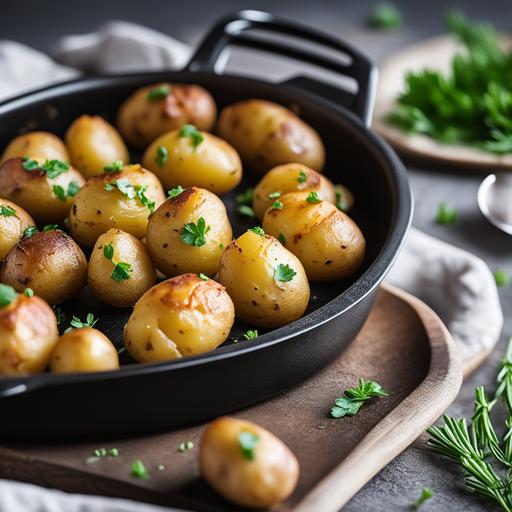
Once you have selected your little potatoes, it’s time to clean and prepare them for cooking. Follow these steps:
-
First, give the potatoes a good rinse under cold water to remove any dirt or debris.
-
Use a vegetable brush to gently scrub the potatoes, especially if they have a thin skin.
-
If you prefer, you can leave the skin intact, as it adds a nice texture and flavor. However, if you prefer a smoother texture, you can peel the potatoes.
-
Once clean, pat the potatoes dry using a paper towel.
Tips and Tricks
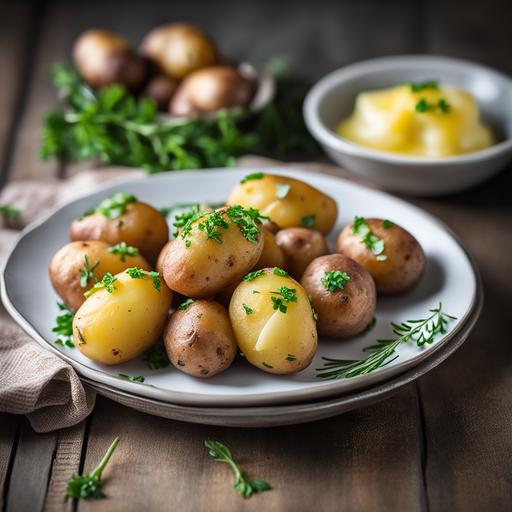
Before moving on to the actual recipe, let’s explore some tips and tricks that will help you achieve the perfect little potatoes in the oven:
-
Size Matters: For even cooking, try to select potatoes of similar size. This will ensure they all cook at the same rate and avoid some becoming overcooked while others remain undercooked.
-
Halving or Not: Depending on your recipe or preference, you can either leave the potatoes whole or halve them. Halving the potatoes can speed up the cooking process, making them ideal for quick weeknight meals.
-
Flavor Enhancers: Little potatoes are like blank canvases, ready to absorb flavors. Experiment with adding herbs, spices, garlic, or even a dash of olive oil to enhance their taste.
Recipe: Oven-Roasted Little Potatoes
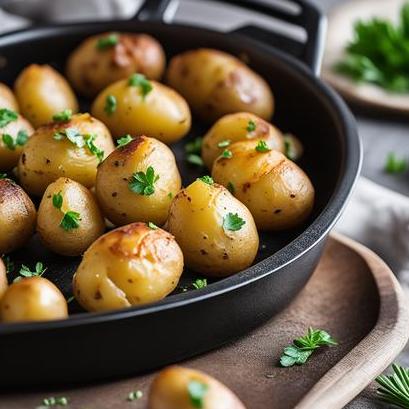
Now, let’s dig into the step-by-step recipe to achieve perfectly cooked, mouthwatering little potatoes in the oven.
Ingredients:
-
2 pounds of little potatoes
-
2 tablespoons of olive oil
-
1 teaspoon of salt
-
1/2 teaspoon of black pepper
-
Optional: chopped fresh herbs (e.g., rosemary, thyme) for garnish
Instructions:
-
Preheat your oven to 425°F (220°C). Line a baking sheet with parchment paper for easy cleanup.
-
In a large bowl, add the cleaned and dried little potatoes. Drizzle olive oil over the potatoes, followed by salt and black pepper.
-
Toss the potatoes gently until they are evenly coated with oil and seasoning.
-
Transfer the potatoes onto the prepared baking sheet, arranging them in a single layer.
-
Place the baking sheet in the preheated oven and let the potatoes roast for about 25-30 minutes or until they turn golden brown. For extra crispiness, you can leave them for a couple of extra minutes.
-
Once cooked, remove the baking sheet from the oven and let the potatoes cool for a few minutes. Sprinkle them with fresh herbs, if desired, for added flavor and presentation.
-
Serve your oven-roasted little potatoes as a delightful side dish or incorporate them into your favorite recipes!
Doneness Checks
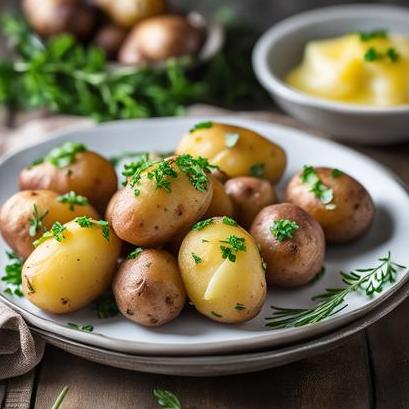
Determining the doneness of your oven-roasted little potatoes is crucial. Here are a few ways to check if they are perfectly cooked:
-
Piercing with a fork: Insert a fork into one of the potatoes. If it slides in easily, the potatoes are tender and cooked through.
-
Texture Test: Break a potato open and check the interior. It should be soft and creamy, with no signs of uncooked or hard centers.
-
Color: Keep an eye on the potatoes’ color as they roast. They should turn a beautiful golden brown, indicating that they are caramelized and deliciously crispy on the outside.
Overcook and Undercook Risks
While cooking little potatoes in the oven is relatively forgiving, there are a couple of risks to be aware of:
-
Overcooking: Leaving the potatoes in the oven for too long can cause them to become mushy and lose their shape. Keep a close eye on them to avoid this outcome.
-
Undercooking: On the other hand, undercooking little potatoes can result in hard and unappetizing centers. Ensure they are sufficiently tender before removing them from the oven.
Variations and Serving Ideas
Now that you have mastered the basic oven-roasted little potatoes, don’t be afraid to experiment with variations and serve them in different ways. Here are a few ideas to get you started:
-
Garlic Parmesan: Toss the cooked little potatoes with melted butter, minced garlic, grated Parmesan cheese, and chopped parsley for a flavorful twist.
-
Spicy Cajun: Sprinkle the potatoes with Cajun seasoning or a combination of paprika, garlic powder, onion powder, cayenne pepper, thyme, and oregano before roasting for a spicy kick.
-
Herb-infused: Add rosemary, thyme, or any other herbs of your choice to the olive oil mixture for a fragrant herb-infused roasted potatoes.
Serve the roasted little potatoes as a side dish alongside roasted meats, grilled vegetables, or even simply enjoy them on their own!
Conclusion
Congratulations! You have now mastered the art of cooking little potatoes in the oven. From understanding the food science behind them to selecting the right potatoes, cleaning, preparing, and roasting them to perfection, this comprehensive guide has provided you with all the information you need. Embrace your creativity, experiment with flavors, and enjoy the delightful taste and texture of oven-roasted little potatoes. Happy cooking!
Sources
FAQS On Little Potatoes Oven Recipe
What Kind Of Potatoes Should I Use For The Oven Recipe?
You can use small baby potatoes or any other small variety of potatoes for this recipe. Baby potatoes work well because they cook quickly and have a creamy texture.
Should I Peel The Potatoes Before Baking Them In The Oven?
You do not need to peel the potatoes for this recipe. Leaving the skin on adds a nice texture and flavor to the dish, and it also helps the potatoes hold their shape while baking.
How Should I Season The Potatoes For Baking?
You can season the potatoes with a variety of herbs and spices, such as garlic, rosemary, thyme, salt, and pepper. Toss the potatoes with olive oil and the seasonings of your choice before placing them in the oven.
How Long Do I Need To Bake The Little Potatoes In The Oven?
The cooking time will depend on the size of the potatoes, but generally, you can bake them for 25-30 minutes at 400°F (200°C), or until they are fork-tender and golden brown on the outside.
Can I Add Other Vegetables To The Baking Dish With The Potatoes?
Yes, you can add other vegetables such as carrots, onions, bell peppers, or cherry tomatoes to the baking dish with the potatoes. Just make sure to cut them into similar sizes as the potatoes so that they cook evenly.



